Piano Practice From Czerny to Chopin (sheet music download from the Library)
Glenn Gould is my favourite pianist. There, I said it. The reason I like him is because he is unconventional; unconventional in his approach to the stuffy world of classical music, unconventional in his interpretations, and unconventional in his mannerisms. Maybe I should have said idiosyncratic or eccentric.
Eccentricity and non-conformity are no doubt part of the cultivated public image, but there is something very powerful in the way he tenderly strokes the keys like it is the memory of a long-lost lover, or how he hums and groans incomprehensible along with the music. But there is one more thing I really liked about Glenn Gould, and that is the fact that he hated practicing. He would go days or even weeks without touching the piano, and he once claimed that the “best playing I do is when I haven’t touched the instrument for a month.”
Piano practice just wasn’t very high on his list, and supposedly he practiced less than most during his concert years. After his retirement, he spent even less time at the piano. It is said, that from the mid-seventies, “he was practicing, when at all, as little as half an hour a day, usually about one hour, never more than two.”
For us mere mortals, however, piano practice is essential, and countless composers have written dedicated exercises to keep our fingers nimble and wrists supple. We thought it might be fun to look and listen at music specifically composed for the purpose of piano practice, all starting with the probably most hated composer in the history of piano playing, Carl Czerny.
Carl Czerny
The name Carl Czerny (1791-1857) seems to automatically evokes great fear and loathing in aspiring pianists, but his technical exercises remain an essential part of nearly every pianist’s training. The idea that Czerny was a mere pedagogue churning out a seemingly endless stream of uninspired works actually originates with Robert Schumann.
He writes, “It would be hard to discover a greater bankruptcy in imagination than Czerny has proved.” I think Schumann misses the point. The School of Velocity, The Art of Finger Dexterity, and countless others didactic pieces are solely and stubbornly concerned with acquiring and maintaining piano technique.

We all know how difficult it is to build up muscle dexterity and muscle memory, and how easy it is to fall off the cliff. The great violinist Jascha Heifetz once said, “If I don’t practice one day, I know it; two days, the critics know it; three days, the public knows it.”
Czerny – Le Perfectionnement, Op. 755, No. 24 (with sheet music)
Czerny’s aim is clear, get your piano technique sorted first and then worry about making music. Czerny was pretty thorough in his aim, and his various “Schools” combine pedagogy with revelations about contemporary performing practices. Chopin greatly admired Czerny, as did Franz Liszt. In fact, the much-hated Carl Czerny is actually “considered the father of modern piano technique.”
Friedrich Burgmüller
It’s one thing to train the muscles of your hand, but quite another to keep your mind and ears interested in the process. As such, composers and pianists far and wide have tried to make the process of piano practice more interesting. Take for example Friedrich Burgmüller (1806-1874), a German composer and pianist. He settled in Paris and made his living as a much-esteemed piano teacher. His compositions proved successful among amateurs, as he wrote pieces of limited technical challenges, but coupled with the satisfaction of musical interest.
Today, we primarily remember him for three collections of children’s études for the piano. These studies range from early intermediate to more advanced skills, and instead of simply numbering them from 1 to 12, Burgmüller provides descriptive titles. The charming salon pieces of his opus 105, for example, carry evocative names like “Chant du printemps,” “L’enchanteresse,” “L’heure du soir,” “Harpe du nord,” and others. These lovely little miniatures are an absolute joy to play, and they still “provide the basis for piano teaching and the development of technical proficiency.”
Franz Liszt
Franz Liszt (1811-1886) seems to have been born on a piano bench. In time, as we all know, he became the greatest piano virtuoso of his time, and possibly the greatest pianist of all time! His sensational technique and captivating concert personality turned him into the ultimate rock star of the 19th century.

His incredible aptitude for playing the piano manifested itself at an early age, and in 1819, Liszt became a student of Carl Czerny. Czerny recalled, “He was a pale, sickly-looking child, who, while playing, swayed about on the stool as if drunk… His playing was…irregular, untidy, confused, and… he threw his fingers quite arbitrarily all over the keyboard. But that notwithstanding, I was astonished at the talent Nature had bestowed upon him.”
It seems that even the great Franz Liszt was made to work through a number of Czerny exercises to stop throwing around his fingers arbitrarily. Liszt must have understood very early on that the key to success was found in technical proficiency. Why else would he have started work on the most significant of his first published compositions, the Etude en douze exercices at the age of thirteen.
The collection consists of twelve different exercises, each an independent study dealing with a certain technical problem. These exercises did become the basis for Liszt’s “Grandes Études,” but at the time, they “appeared to be an excellent alternative for the more demanding studies of Czerny.”
Stephen Heller
Born in Hungary, Stephen Heller (1813-1888) was also looking to study with Carl Czerny in Vienna. However, Czerny was not only very famous, he was also very expensive. Heller couldn’t afford the tuition and learned his craft elsewhere. He did embark on an extensive concert tour through Hungary, Poland and Germany at the age of fifteen, and by the age of twenty-five, he settled in Paris. Heller established a distinctive concert presence, which eventually paved the way for the establishment of his well-respected piano studio.
He was a prolific composer for the piano, and the first of his more than 160 published piano compositions date from 1829. Even the normally suspicious Robert Schumann predicted “a successful musical future for Heller.” He was first noticed in Paris as a composer of piano and concert studies, which were actually performed by Liszt and others throughout Europe.
Scholars have suggested, “His reputation as a composer primarily of studies became so entrenched that he had difficulty in gaining recognition for his other music.” When it comes to piano practice, however, Heller’s studies have a great sense of rhythmic vitality and lyricism, and they are really fun to play.
Muzio Clementi
Muzio Clementi (1752-1832) published his three-volume Gradus ad Parnassum in 1817, 1819, and 1826. It represents, according to scholars “the culmination of his career, showcasing a veritable treasury of compositional and pianistic technique compiled from all periods of his work.” Clementi was in great demand as a piano teacher, and his students included members of London high society who could afford his substantial fees.

The Gradus is a collection of 100 pieces for keyboard that shows the full diversity of Clementi’s keyboard music. From finger drills to preludes, fugues, canons, character pieces, and sonata movements, more “than half the individual pieces are explicitly arranged into tonally unified suites of three to six movements… If the music in these volumes seems bent on exhausting all the possible varieties of keyboard figurations and textures, it also shows an underlying consistency.”
Pianists of all levels have studied this treasury of compositional and pianistic technique continuously. This monumental work was designed to ascend to the highest level of musical and technical perfection. What a fabulous source of piano practice, as it trains your fingers and simultaneously hides that particular fact under cover of various musical styles and textures.
Johann Baptist Cramer
Let’s stay in London for a bit, and look at the piano practice of Johann Baptist Cramer (1771-1858). If you have ever taken formal piano lessons, there is a good chance that you will have played some of Cramer’s celebrated set of 84 studies for the piano. Published in two sets of 42 each in 1804 and 1810 as Studio per il pianoforte, it is still considered a cornerstone of pianistic technique today.
With this collection, Cramer contributed directly to the “formulation of an idiomatic piano style through his playing and his compositions.” Cramer was a highly respected pianist, and Beethoven “considered him the finest pianist of the day.” He established a highly successful private piano studio in London, commanding top fees for his instruction.
His “Studies for the Pianoforte” seem primarily concerned with matters of touch and the achievement of a singing tone. Yet at the same time, they are not mere exercises useful for an aspiring pianist, but also musically attractive to the listener. During his long professional life he witnessed monumental changes in musical styles and conventions, which he summed up by saying, “in the old days pianists played very well, and now they play awfully loud.”
Benjamin Godard
The French composer Benjamin Godard (1849-1895) might not be a household name today, but he was frequently compared to the young Mozart in his time. Godard entered the Paris Conservatoire at the age of ten as a violinist child prodigy, and he turned to composing shortly after. Godard, like a good many child prodigies, was quickly forgotten, because he “somewhat abused his talent for commercial gain.” Nevertheless, Godard’s music is described as “full of charm and breathing a gentle spirit of melancholy.”
An English critic wrote, “He can conjure up visions of the past, stir up memories of forgotten days … the best that was in him was perhaps expressed in works of small caliber, songs and pianoforte pieces.” Some of these delightful visions emerge in a set of three etudes published as Opus 149. The second volume, a set of six Etudes mélodiques opens with “Intimate Conversation,” in the manner of a Mendelssohn “Song without Words.” We also find a bright “May Song,” a “Nocturne Italien,” and a “Twilight Boating-Song.” Piano practice should be this much fun all the time, don’t you think?
Johann Nepomuk Hummel
Like many of his colleagues, Johann Nepomuk Hummel (1778-1837) was an enthusiastic writer of études. Without doubt, Hummel was one of Europe’s most famous pianists, and he was even hailed as the greatest of all the pianists on the continent. His playing was described as “full of clarity, neatness, evenness, pearly tone and delicacy, as well as an extraordinary quality of relaxation and the ability to create the illusion of speed without taking too rapid tempos.”
Hummel was also one of the most important and expensive teachers in Germany, and both Schumann and Liszt were desperate to study with him, but never did. It almost goes without saying that Hummel was a prolific composer for his chosen instrument, and towards the end of his life he published a set of 24 studies in August 1833. A number of these etudes require great athletic ability, but “Hummel seems more interested in delicacy, color, expressiveness, emotional directness and, interestingly, veneration for the keyboard works of J.S. Bach.”
The set is organized around the circle of fifths, and also includes some brilliant, witty, and song-like miniatures. Robert Schumann called the 24 studies “old-fashioned and not particularly relevant to modern pianists,” but he might have somewhat missed the point.
Frédéric Chopin
If you have ever taken serious piano lessons, you must surely remember countless hours of practicing scales and exercises to train and refine specific aspects of piano technique. To conclude this little survey on piano practice, I want to pay homage to Frédéric Chopin for turning mundane and boring finger exercises into a veritable art form. There is no arguing that his études are carefully constructed pedagogical pieces with a specific technical aim. However, they are simultaneously character pieces full of imagination, passion and poetry, “seemingly communicating the essence of human experiences and emotions.”
And what is more, they are composed for the concert hall. Chopin composed three sets of études between 1829 and 1839, and they “not only represent a developing style of playing that reflects the new aspects of the piano, but also provide an encapsulation of Chopin’s unique style.” Many étude composers before him had tried to achieve a balance between technical and artistic aims, but according to Schumann, in Chopin “imagination and technique share dominion side by side.”

For me personally, these are probably the greatest études ever written. Many of the sampled composers have tried to find ways of transforming the sometimes frustrating, monotonous and always strenuous labor of practicing into a rewarding musical experience. What’s your favourite etude?
Article from INTERLUDE (Read it here)
Browse in the Library:
| Artist or Composer / Score name | Cover | List of Contents |
|---|---|---|
| A dozen A Day Book 1 Technical exercises for the piano |
 |
A dozen A Day Book 1 Technical exercises for the piano |
| A dozen A Day Book 2 Technical exercises for the piano |
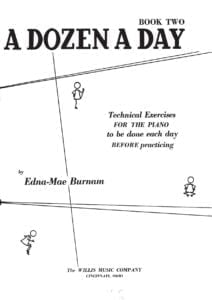 |
|
| A dozen A Day Book 3 Technical exercises for the piano |
 |
|
| A dozen A Day Book 4 Technical exercises for the piano |
 |
|
| A dozen A Day Mini Book Technical exercises for the piano |
 |
|
| A dozen Day Preparatory Book Technical exercises for the piano |
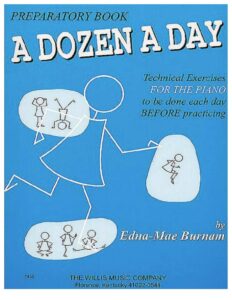 |
|
| A Farewell To Arms Love Theme From A Farewell To Arms film by Mario Nascimbene Francis Webster 1957 |
 |
|
| A Felicidade (Antonio Carlos Jobim) | ||
| A Festival Gathering Of Carols (Musescore File).mscz | ||
| A Fine Frenzy – Almost Lover |
 |
|
| A Fistful of Dollars (Ennio Morricone) | ||
| A Generative Theory Of Tonal Music by Fred Lerdahl and Ray Jackendoff (Book) |
 |
|
| A Guide To Guitar Chords by Curt Sheller |
 |
A Guide To Guitar Chords by Curt Sheller |
| A Guide To Musical Analysis by Nicholas Cook (Book) |
 |
|
| A Handbook Of Piano Playing (By Eric Hope) (1962) |
 |
|
| A Heart Full Of Love (Musescore File).mscz | ||
| A love suicide (Yutaka Minobe) | ||
| A Love Supreme (by Ashley Kahn) The story of john Coltrane’s signature album (Book) |
 |
|
| A Media Luz (Edgardo Donato) | ||
| A Modern Approach To Jazz Rock And Fusion For Guitar with Tablature |
 |
A Modern Approach To Jazz Rock And Fusion For Guitar |
| A Modern Method For Guitar (Berklee) 1 by William Leavitt |
 |
A Modern Method Berklee 1 |
| A Modern Method For Guitar (Berklee) 2 by William Leavitt |
 |
A Modern Method For Guitar (Berklee) 2 |
| A Modern Method For Guitar (Berklee) 3 by William Leavitt |
 |
A Modern Method For Guitar (Berklee) 3 |
| A MOZART REINCARNATED (Ennio Morricone) |
 |
|
| A Mozart Reincarnated by Ennio Morricone (Musescore File).mscz | ||
| A New Approach To Ear Training by Leo Kraft (BOOK) |
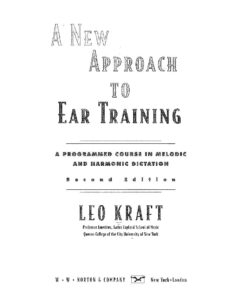 |
|
| A New Approach To Piano Technique (By Ruth A. Dickerson) (1962) |
 |
A new approach to piano technique |
| A Night In Tunisia – Dizzy Gillespie.mscz | ||
| A Pedal Method For The Piano (By Albert F Venino) (1893) |
 |
|
| A Popular Account Of Ancient Musical Instruments And Their Development by William Lynd (Book 1897) |
 |
|
| A Rockin’ Christmas Piano Vocal Guitar |
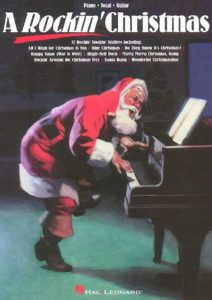 |
20 songs to sing on a rockin’ Christmas Eve Includes: All I Want for Christmas Is You * Grandma Got Run Over by a Reindeer * Happy Xmas (War Is Over) * Jingle-Bell Rock * Merry Merry Christmas Baby * Rockin’ Around the Christmas Tree * Santa Baby & moreRockin Christmas |
| A Single Man – George’s Waltz (Shigeru Umebayashi) | ||
| A Single Man – Stillness of the Mind (Abel Korzeniowski) | ||
| A Smooth Jazz Christmas – Mellow Seasonal Favorites for Piano arr. Roger House |
 |
A Smooth Jazz Christmas – Mellow Seasonal Favorites for Piano arr. Roger House |
| A Song For You – Leon Russell Ray Charles (Musescore File).mscz | ||
| A Star Is Born – Always Remember Us This Way Lady Gaga |
 |
|
| A Star Is Born – Shallow Lady Lady Gaga |
 |
|
| A Tale Of Two Sisters Ost – Epilogue Piano Solo |
 |
|
| A Thousand Years – Twilight OST (Christina Perri) | ||
| A Time For Love – Johnny Mandel |
 |
|
| A Time For Us – Guitar TABlature |
 |
|
| A Time For Us (Love Theme from Romeo and Juliet) Nino Rota |
 |
|
| A Time For Us (Romeo and Juliet OST) Nino Rota | ||
| A Touch Of Jazz 14 well-known hymns, gospel songs and contemporary praise songs by Wolaver Bill |
 |
A Touch Of Jazz 14 well-known hymns, gospel songs and contemporary praise songs by Wolaver Bill |
| A Tribute To Ella Fitzgerald Piano Vocal Guitar |
 |
A tribute to ELLA FITZGERALD |
| A Walk To Remember – Only Hope | ||
| A whiter shade of pale – Procul Harum | A whiter shade of pale – Procul Harum | |
| AaRON U-turn Lili Piano |
 |
|
| Ab Ovo – Joep Beving (Musescore File).mscz | ||
| Abba – Abba Gold – Greatest Hits |
 |
ABBA Gold Geatest Hits booksong sheet music |
| Abba – Chiquitita | ||
| Abba – Dancing Queen | ||
| Abba – Fernando | ||
| Abba – I Have A Dream | ||
| Abba – Like An Angel Passing Through My Room | ||
| Abba – Mamma Mia | ||
| Abba – Slipping Through My Fingers | ||
| Abba – Thank You For The Music | Abba-Thank-You-For-The-Music 1st page | |
| ABBA – Thank You For The Music (Piano Vocal Guitar) | ABBA – Thank You For The Music (Piano Vocal Guitar) | |
| ABBA – Thank You For the Music (Piano vocal Guitar) (Musescore File).mscz | ||
| Abba – Thank You For The Music Piano & vocal | Abba – Thank You For The Music-abba-satb | |
| Abba – The Winner Takes It All | ||
| ABBA Dancing Queen Easy Piano Solo |
 |
|
| ABBA Fernando (Piano Solo arr.) |
 |
|
| ABBA Fernando (Piano Solo arr.).mscz | ||
| ABBA Greatest Hits |
 |
ABBA GREATEST HITS SHEET MUSIC BOOK |
| ABBA I Have A Dream |
 |
|
| Abba The Very Best Vol 1 Easy Piano Hans Gunter Heumann Pop Classics For Piano |
 |
Abba The Very Best Vol 1 Easy Piano |
| Abba The Very Best Vol 2 Easy Piano Hans Gunter Heumann Pop Classics For Piano |
 |
Abba The Very Best Vol 2 Easy Piano |
| Abbey Lincoln Songbook |
 |
Abbey Lincoln Songbook |
| Abbey Lincoln Songbook Piano Vocal Guitar Chords |
 |
Abbey Lincoln Songbook Piano Vocal Guitar Chords |
| Abdullah Ibrahim – The Piano World Of |
 |
Abdullah Ibrahim, The Piano World Of |
| Abdullah Ibrahim The African Piano Of Abdullah Ibrahim Vol 1 |
 |
Abdullah Ibrahim The African Piano Of Abdullah Ibrahim Vol 1 |
| Abdullah Ibrahim The Wedding (piano solo transcription sheet music, partition) |
 |
|
| Abel Korzeniowski – Death Is My Heir (from Romeo and Juliet) |
 |
|
| ABRSM Jazz Piano Pieces Grade 1 to 5 |
 |
ABRSM Jazz Piano Pieces Grade 1 to 5 ABRSM Jazz Piano Pieces Grade 5ABRSM Jazz Piano Pieces Grade 5 |
| ABRSM Piano Exam Pieces Grade 1 (2016) |
 |
ABRSM Piano Exam Pieces Grade 1 (2016) |
| ABRSM Piano Scales, Arpeggios Grade 8 |
 |
|
| ABRSM Piano Scales, Arpeggios and broken chords Grade 1 |
 |
|
| ABRSM Piano Scales, Arpeggios and broken chords Grade 4 |
 |
ABRSM Piano Scales, Arpeggios and broken chords Grade 4 |
| ABRSM Piano Scales, Grade 2 A Guide for Students and Teachers | ABRSM Piano Scales, Grade 2 A Guide for Students and Teachers | |
| ABRSM – Time pieces for guitar vol. 1 |
 |
|
| ABRSM – Time pieces for guitar vol. 2 |
 |
|
| ABRSM 2017 18 Piano Exam Pieces Grade 1 |
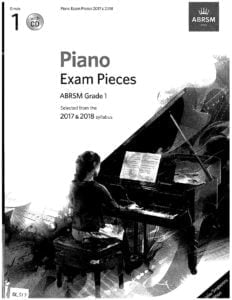 |
ABRSM 2017 18 Piano Exam Pieces Grade 1 |
| ABRSM 2017 18 Piano Exam Pieces Grade 2 |
 |
ABRSM 2017 18 Piano Exam Pieces Grade 2 |
| ABRSM 2017 18 Piano Exam Pieces Grade 3 |
 |
|
| ABRSM 2017 18 Piano Exam Pieces Grade 4 |
 |
|
| ABRSM 2017 18 Piano Exam Pieces Grade 5 |
 |
|
| ABRSM 2017 18 Piano Exam Pieces Grade 6 |
 |
|
| ABRSM 2017 18 Piano Exam Pieces Grade 7 |
 |
|
| ABRSM 2017 18 Piano Exam Pieces Grade 8 |
 |
|
| ABRSM 2021-2022 Piano Exam Pieces Grade 1 |
 |
|
| ABRSM 2021-2022 Piano Exam Pieces Grade 2 |
 |
|
| ABRSM 2021-2022 Piano Exam Pieces Grade 3 |
 |
|
| ABRSM 2021-2022 Piano Exam Pieces Grade 5 |
 |
|
| ABRSM 2021-2022 Piano Exam Pieces Grade 6 |
 |
|
| ABRSM 2021-2022 Piano Exam Pieces Grade 8 |
 |
|
| ABRSM 2021-2022 Piano Exam Pieces Initial Grade |
 |
ABRSM 2021-2022 Piano Exam Pieces Initial Grade |
| ABRSM Aural Training In Practice Book 1 Grades 1 to 3 |
 |
|
| ABRSM Aural Training In Practice Book 2 Grades 4 and 5 |
 |
|
| ABRSM Discovering Music Theory (Complete) Grades 1 to 5 Workbook by Simon Rushby (2020 Exams) |
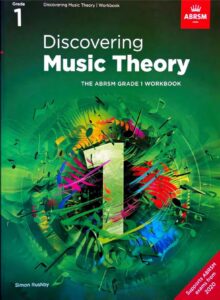 |
ABRSM Discovering Music Theory (Complete) Grades 1 to 5 Workbook by Simon Rushby (2020 Exams) contents |
| ABRSM Erster Verlust Grade 4 ABRSM Piano Exam Pieces 2021 & 2022 |
 |
|
| ABRSM Etude In A Minor – Dmitry Kabalevsky ABRSM Grade 4 Piano Exam Pieces 2021 & 2022 |
 |
|
| ABRSM Grade 2 – Inter-City Stomp byChristopher Norton From Microjazz Collection (Sheet Music) |
 |
|
| ABRSM Initial Grade Piano Exam Pieces 2023 2024 |
 |
|
| ABRSM Minuet and Trio D 41 No 21 – Franz Schubert ABRSM Grade 4 Piano Exam Pieces 2021 & 2022 |
 |
|
| ABRSM More Music Theory Sample Papers Grade 5 For New Format |
 |
|
| ABRSM Music Theory In Practice, Grade 1 (Eric Taylor) |
 |
|
| ABRSM Music Theory In Practice, Grade 2 (Eric Taylor) |
 |
|
| ABRSM Music Theory Past Papers Grade 1 2004 |
 |
|
| ABRSM Music Theory Past Papers Grade 4 2016 |
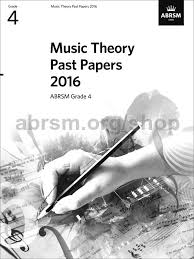 |
|
| ABRSM Music Theory Past Papers Grade 5 2012 |
 |
|
| ABRSM Music Theory Past Papers Grade 6 2013 |
 |
|
| ABRSM Nikki Iles Danny Boy ABRSM Piano Exam Grade 8 2023 Jazz Piano arr. inspired by Bill Evans |
 |
|
| ABRSM Nikki Iles Friends Book 1 Intermediate Jazz Pieces For Piano |
 |
ABRSM Nikki Iles Friends Book 1 Intermediate Jazz Pieces For Piano |
| ABRSM Nikki Iles Friends Book 2 Intermediate To Advanced Jazz Pieces For Piano |
 |
ABRSM Nikki Iles Friends Book 2 Intermediate To Advanced Jazz Pieces For Piano |
| ABRSM Nikki Iles The Elephant Parade ABRSM piano Exam |
 |
|
| ABRSM Piano 2025-2026 Grade 8 C3 A Nightingale Sang in Berkeley Square by Sherwin – Maschwitz |
 |
|
| ABRSM Piano Exam 2007-2008 Grade 3 |
 |
|
| ABRSM Piano Exam 2015-16 Grade 3 |
 |
ABRSM Piano Exam 2015-16 Grade 3 |
